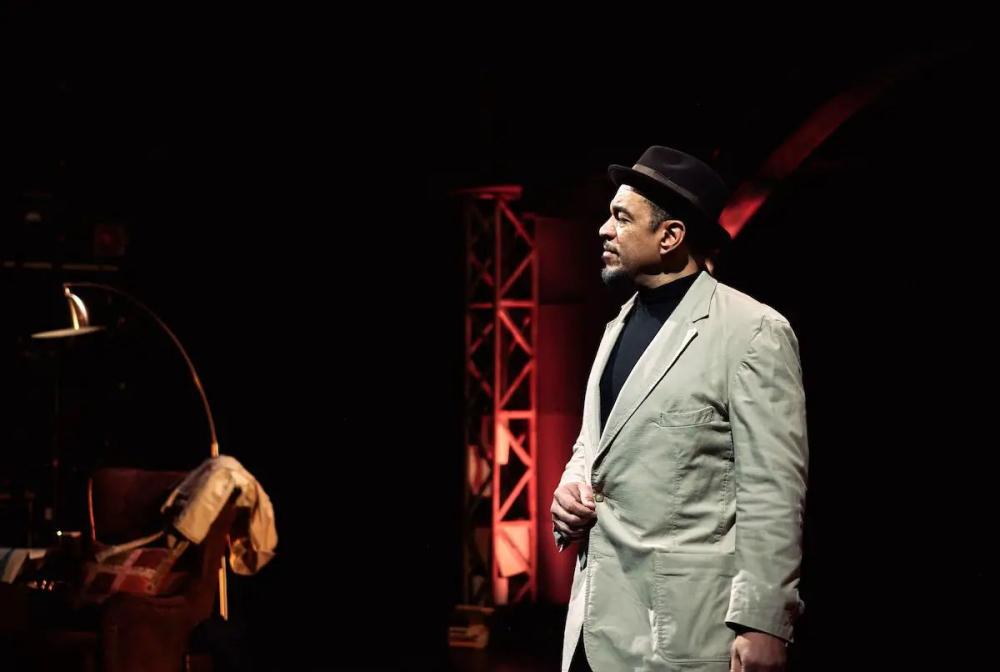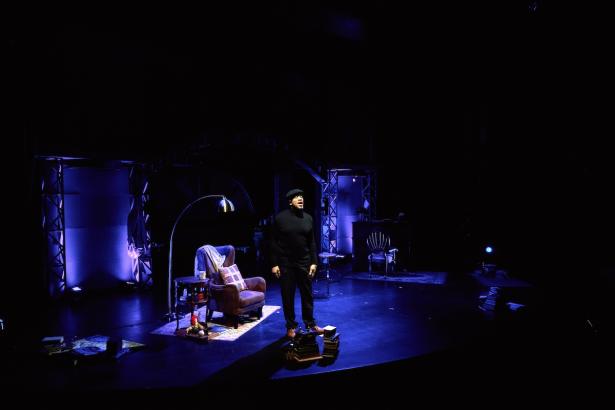Review: How I Learned What I Learned by Congo Square Theatre Is Wisdom on Being Black in America
How I Learned What I Learned, now playing at the Broadway Playhouse, 175 East Chestnut Street, Chicago. The play runs 90 minutes with no intermission and plays through May 5.
Lennix is a Chicago-born journeyman actor. He is currently appearing in Purpose at Steppenwolf Theatre and crushing it in How I Learned What I Learned. Lennix channels Wilson's words with passion and ease. He enters wearing a t-shirt that says "I am actually white" on the front, and on the back "I was an accident that didn't turn out well." He casually lets it slip that he got it from Clarence Thomas, setting the stage for truth-telling with an undercurrent of confrontation about the forced disappearance of Black culture through appropriation and poverty. Lennix's performance is imbued with the gravitas of August Wilson's unique truth-telling. It is poetically blunt and possibly unsettling to those who think they have the "race thing" all figured out.

Harry Lennix. Photo courtesy Congo Square Theatre.
He reads a description of Black people from an old Webster's Dictionary and it is odious. They are subhuman, lazy, sex-obsessed, stupid, and a laundry list of other demeaning characteristics according to white people. Of course, white people are described as hard-working, God-fearing, salt of the earth, honest, etc. A murmur of recognition ran through the mostly Black audience.
Wilson's wisdom and gift of words spin a tale of his youth and young adulthood. Lennix excels at the '60s-'70s swagger with an innate cool factor familiar to most who lived through that time. His performance is even-keeled and exudes memories of the Black Power movement's influence. Lennix looks at the audience as if speaking to each person and looking them in the eye. His posture and movement evoke visions of Wilson in his cap or his slightly crumpled trench jacket. It is a superb performance.
His series of jobs mostly ended with him quitting because of disrespect. One manager told him he would shoot him if he caught him stealing. He quit a dishwashing job, a toy store job for a bankrupt owner, and other menial labor available for Black people. Of course, he does get jailed for cutting the lock on his apartment after falling a month behind on the rent. It is recounted that a mentor told Wilson who to call when he got put in jail, not if.
The stories are a universal truth of what it means to be Black in this country and to demand respect in all things even at the prospect of bodily harm or as we all have witnessed—death. Wilson spoke truths that reveal what is now called microaggression instead of racism. The one that needs to be on repeat is when someone says, "I don't see color." That is bullshit because the words being spoken negate a person's Blackness and create a status more comfortable in a society built on white supremacy. Lennix speaks these words confidently and forcefully as Wilson would have.
One of the more egregious incidents of racism was against his mother, Daisy. His mother won a call-in radio contest with the prize being a brand new Speed Queen washer. When she went to claim her prize and the station owners saw that she was Black, they gave her a certificate for a used washer from the Salvation Army. She told them where to put it despite her friend telling her that it was something better than not having it. She got a dime from her purse and dropped it in a saved mayonnaise jar. Daisy told her son, "Something is not better than nothing." They had saved enough in one year to buy that brand-new Speed Queen washer.
Lennix's expressive face projects deep grief as he says when you lose your mother you realize you have been living on her love. It is what kept him going. Daisy was his refuge when his back was against the wall. It was a revealing look into what made August Wilson the writer who best told the stories of the African American experience on the stage.

Harry Lennix. Photo courtesy Congo Square Theatre.
How I Learned What I Learned is directed by Ken-Matt Martin, former artistic director at the former Victory Gardens Theater.. His direction is well-paced and Lennix's movement and stance are reminiscent of Wilson in photos. The set by Sydney Lynne Thomas is filled with props designed by Lonnae Hickman. It is filled with books, comfortable chairs, and a roll-top desk. A qwerty keyboard above the stage shows projections designed by Rasean Davonté Johnson listing the characters recalled in the play. The lighting design by Jason Lynch was evocative of the '60s and '70s in my mind. The blue lights called to mind the black lights and I could almost smell the "Blue Sonata" incense. Some of the lighting gave a sepia-tone vibe.
At the end of the play, a projected list of Wilson's plays was projected and I found that to be a poignant moment. The Pittsburgh Cycle and his other works were projected on both sides of the stage. All of that brilliance from the mind of a man who did not compromise and believed that respect is a presumed reaction when you meet another person, and sometimes you demand it.
I highly recommend you see How I Learned What I Learned, now playing at the Broadway Playhouse, 175 E. Chestnut St.. The play runs 90 minutes with no intermission and plays through May 5. For tickets and more information, please visit Congo Square Theatre or broadwayinchicago.


Spread the word